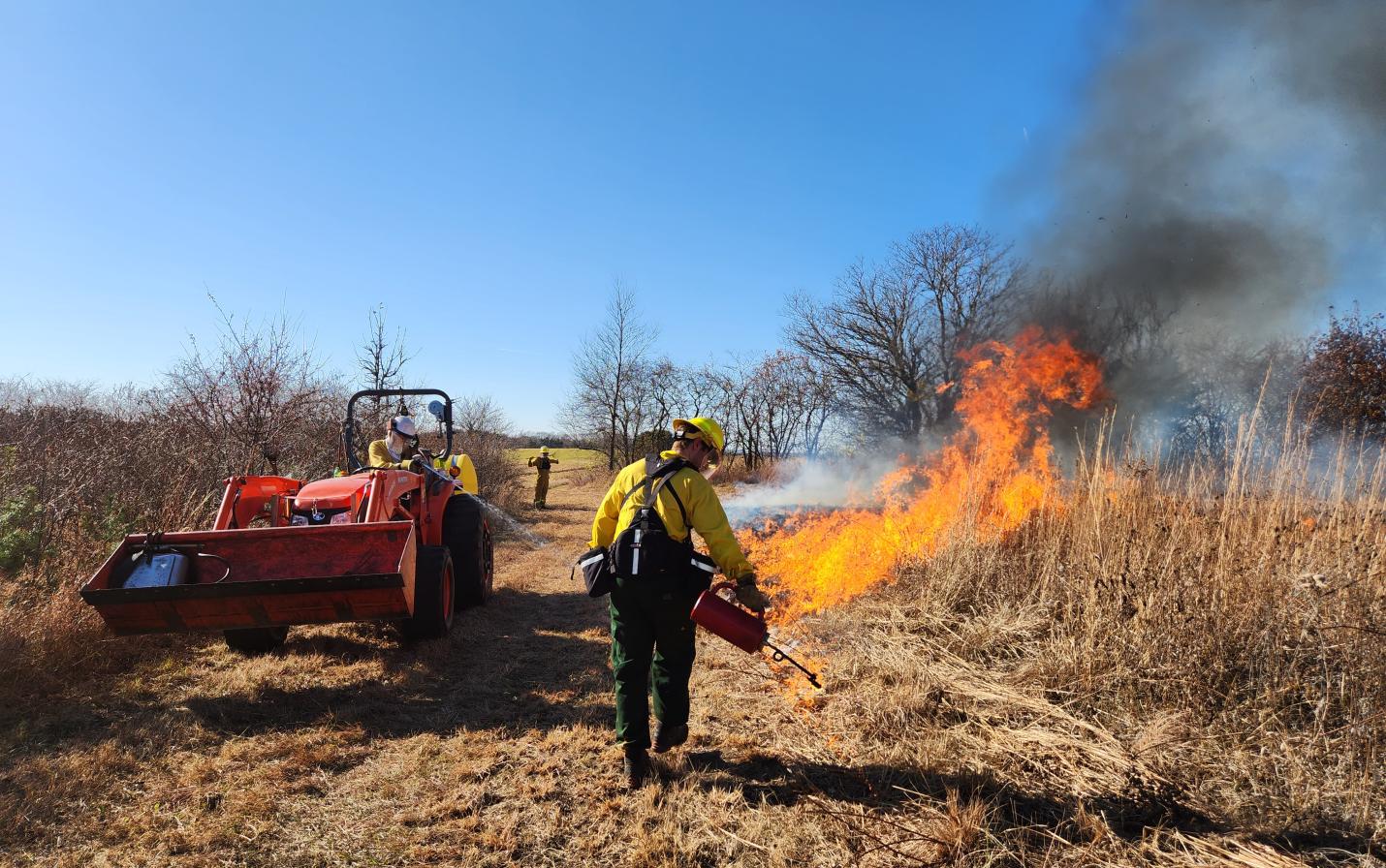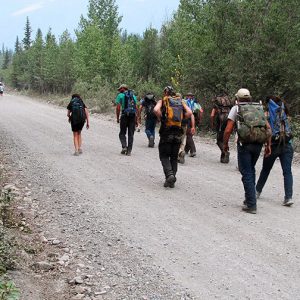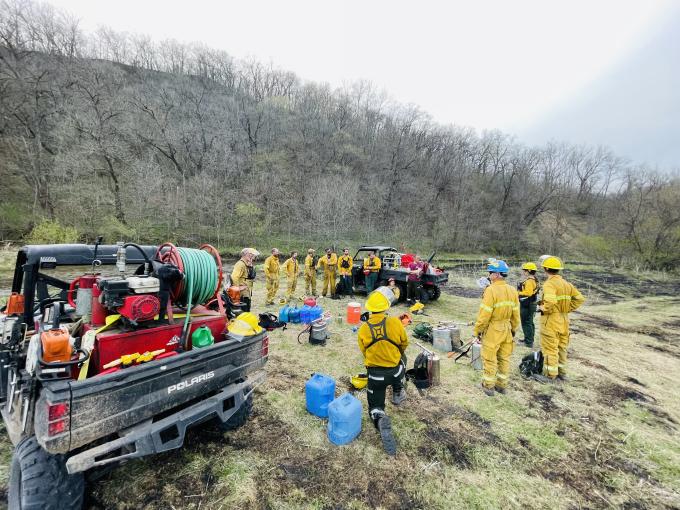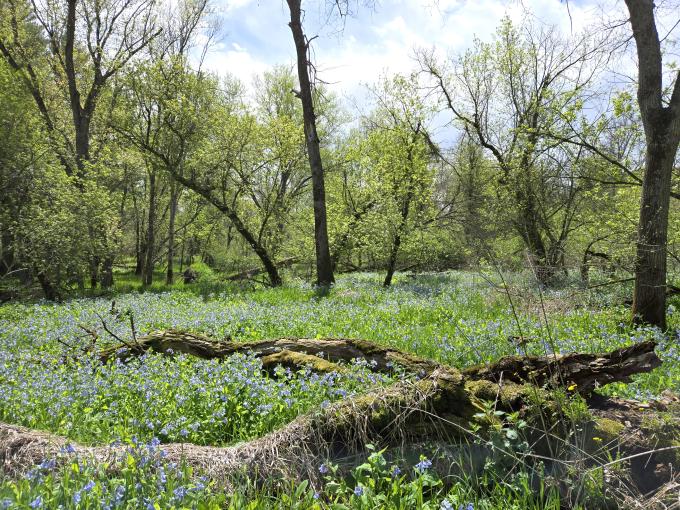
What was once a rare sight is now a seasonal rhythm along the winding roads that meander through the bluffs. Prescribed burns are taking root as a trusted tool in the Driftless Area, helping nature heal and thrive the way it has for thousands of years. The Conservancy uses prescribed burns as a key management tool to reintroduce this natural process and promote diverse ecosystems on our nature preserves. These burns benefit fire-dependent communities like native prairies, marshes, sedge meadows, oak woodlands, savannas, and forests by reducing fuel loads, recycling carbon, and stimulating plant growth.
Prescribed fires encourage native plants to regenerate, boost flower and seed production, and limit invasive species. They also support wildlife, including pollinators, wild turkeys, deer, and red-headed woodpeckers. Additionally, prescribed burns are used to top-kill brush and help control invasive species like garlic mustard, honeysuckle, and buckthorn.
WHAT GOES INTO A BURN
Prescribed burning is a seasonal activity that requires extensive planning in accordance with a detailed burn plan. But before the plan is ever put into place, there are things our team members need to do outside of the office. Throughout the year, our team trains to be able to work in the grueling conditions of burn season using weighted packs and conducting ruck training on a variety of surfaces. Many of the properties we protect include extremely steep bluffs, sometimes only traversed by scaling up the side of the bluff on hands and knees. Each year, members of the burn team must pass an endurance test in order to be certified. They also regularly attend training to learn the proper use of new equipment that will help them most efficiently complete their tasks out on the land.

(Photos above: Left: Ruck training prepares team members for burn season and the required endurance test required for fire certification. Right: Michael Reitz, Restoration Ecologist, learns to use new equipment at a fire training event for conservation professionals.)
The Conservancy’s burn plans cover numerous details, such as objectives, permits, weather conditions (temperature, humidity, wind), smoke management, crew needs, equipment, and safety protocols. Due to increasingly unpredictable weather patterns, there have been fewer optimal burning days in recent seasons, so having everything carefully prepared helps the team make the best use of their time.
In addition to the physical and professional training, the team works together to create fire plans. These plans also include firebreak preparation, which involves clearing vegetation to ensure safe access and containment of the burn. Additionally, refugia, or unburned areas, may be incorporated to provide habitat for specific wildlife when necessary. Burn units often rotate across the preserve to optimize management and provide adequate untouched habitat, which is especially important for species like pollinators that rely on refugia.
CONDUCTING A BURN
Once all the planning is complete and weather conditions are favorable, typically from October to May, the burn is ready to begin. Conservancy staff prepare equipment, secure permits, and notify nearby property owners. Upon arrival, the crew conducts a briefing, reviews the burn plan, and assigns tasks for the day. After a test fire, the burn boss decides whether to proceed or call off the burn.
If all goes as planned, two crews ignite the fire along the firebreak, using radios to communicate and spread fire safely.
The burn typically moves from upslope to downslope, into the wind, until both crews meet and the fire naturally extinguishes. During the burn, crews use firebreaks to control fire spread. Afterward, the crew “mops up” by checking for smoldering spots and extinguishing them using water, tools, or soil. If the fire cannot be fully extinguished by the end of the day, a team member stays overnight to monitor it. The Conservancy must maintain a presence until the fire is declared fully out by the burn boss. After it is all done, the team debriefs to assess and learn from the event.

(Photo: The burn boss and team debrief after a burn and discuss the experience, what they learned, and any changes they would make for the next burn.)
TOOLS OF THE TRADE
The Conservancy uses specialized firefighting equipment to ensure burns are safe and efficient. This includes fire-resistant clothing, helmets, gloves, belt weather kits, and leather boots, along with chest harnesses for carrying essentials like maps, radios, and snacks. Tools like rakes, flappers, and pulaskis help control smoldering fuel. Drip torches ignite fire in desired patterns, while water, carried in back cans or on vehicles with pumper units, is crucial for controlling and extinguishing flames. A portable pump allows us to refill pumper units from nearby streams, saving time during burns.

(After a fire, with the invasive plants and shrubs removed, native plants like the Virginia bluebells can thrive and offer nourishment to those early spring pollinators like the rusty patched bumblebees. Photo by Abbie Church.)
THIS IS ALL THANKS TO YOU...OUR MEMBERS AND SUPPORTERS!
YOU are giving native plants a chance for a fresh start through your membership and gifts. By keeping invasive species under control, the rusty-patched bumblebee and other pollinators can thrive because a diverse blend of food sources are able to grow. Thanks to all of our dedicated volunteer, donors and sponsors who make it possible for us to prepare and burn these critical habitats.
Not a member yet? Let's work together to protect the biodiversity of the Driftless while making our land more climate resilient for generations to come.